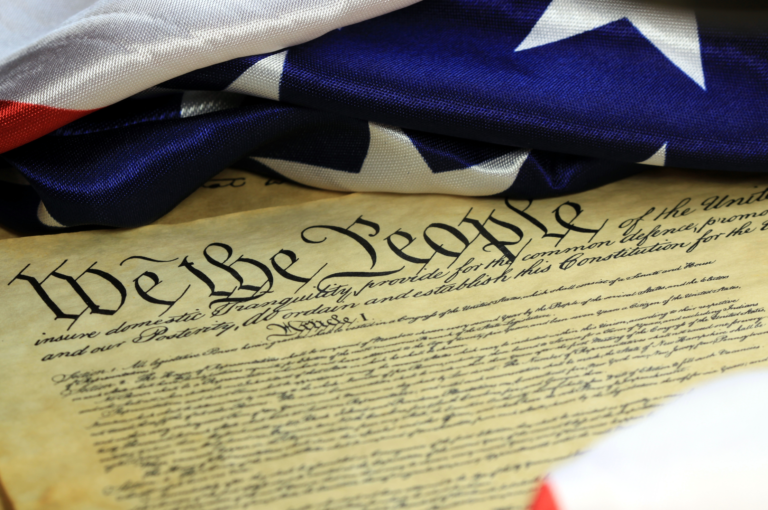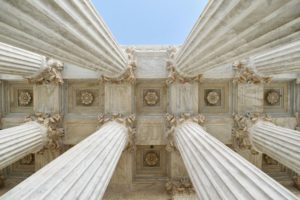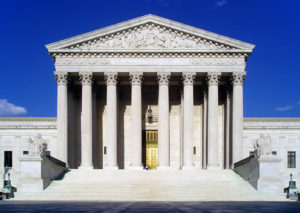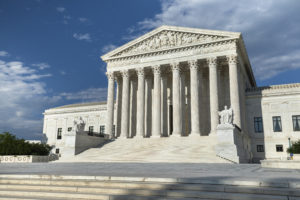What is the 5th Amendment’s Takings Clause?

How does the 5th Amendment impact American’s everyday lives?
In 2013, the government forced Rose Knick to grant the public access to her farmland after it was rumored to be the location of a former burial site.
Rose was offered no compensation in exchange for this requirement to allow would-be grave seekers to trespass on her private farm—a violation of her constitutional rights.
You’ve just come face-to-face with the legal principle of “takings,” under which a government entity takes your private property for public use, either directly by an eminent domain seizure, or indirectly by regulation.
If there’s good news in this scenario, it’s that as a property owner in the United States, you’ll still enjoy certain rights when you’re faced with a property taking, including a right to full compensation and a right to challenge the seizure in court.
In Rose’s case, Pacific Legal Foundation represented her free of charge, ultimately resulting in a victory at the Supreme Court.
But what is the actual concept of a “taking,” and why is it so important in our system of government?
The 5th Amendment, Property rights, and takings in the Constitution
As with so many contemporary legal questions, the origin of the debate over property rights stretches back to the very founding of our nation.
Among the key goals of our nation’s founding documents was to protect individual rights and to place strict limitations on the powers of both the federal and state governments. The Founders well understood that protecting private property rights was of paramount importance in meeting those goals.
While the colonists were still living under British rule, property rights were routinely violated. “Writs of Assistance” subjected colonists to invasive searches and seizures by British troops under the guise of searching for goods that may have been imported illegally and on which taxes had not been collected. This is precisely why the Fourth Amendment came into existence.
Several other key provisions in the Constitution recognize the fundamental purpose of property rights. For example, the Takings Clause of the 5th Amendment, which limits the power of the federal government, provides that “…nor shall private property be taken for public use, without just compensation.”
Or consider the Due Process Clause of the 14th Amendment, which similarly limits the power of state and local governments by commanding that “…nor shall any state deprive any person of life, liberty, or property, without due process of law.”
These provisions recognize the fundamental nature of the rights we call “property”—the right to tell others“keep out”; the right to develop and use land; and the right to derive income from that property. These rights were critically important, both to the Founders who adopted the original Constitution after the Revolution and the drafters of the 14th Amendment after the Civil War.
And this is where takings come in. The usual situation where the government’s power is limited is when it acquires private property by eminent domain. As the Supreme Court has recognized, all sovereign governments have the power of eminent domain by which they can force the owner of private property to sell it to the government.
But that power is limited: it can be executed only as long as the taking is for “public use,” and the government provides the owner with “just compensation.” If the public benefits from taking someone’s private property, it is only fair that the entire public—and not a lone property owner—bear the cost.
That is exactly how the Supreme Court summed it up more than 50 years ago:
“The 5th Amendment’s guarantee that private property shall not be taken for a public use without just compensation was designed to bar Government from forcing some people alone to bear public burdens which, in all fairness and justice, should be borne by the public as a whole.”
A half-century later, that assessment remains a sound basis for limiting government power and protecting property owners in disputes over takings.
The typical situation is where private property is taken for some public use, such as a highway, post office, or military base, and the government agrees to compensate the owner. It may not seem fair to be forced to give up property, but at least the owner can be confident they’ll be justly compensated for the loss, thanks to the aforementioned 5th Amendment guarantee.
Different kinds of takings
That’s one kind of taking. But the other kind of taking is perhaps a greater threat to property rights because it is more subtle and insidious: regulatory takings.
In a regulatory taking, the government simply adopts regulations that have the effect of restricting the use and value of the property, rather than outright seizing the property. Regulatory takings include things like severe environmental restrictions, outlawing otherwise legal uses, or requiring that the owner allow members of the public on their land.
And critically, even where a regulation severely limits the uses of the property or seriously devalues it, the government does not recognize any obligation to provide the owner with compensation. In such cases, officials will typically say they are only regulating property, not “taking” it, even though from the owner’s perspective, the effects on use or value are so severe that government might as well have taken it through eminent domain.
As it turns out, these regulatory takings are eminent domain in all but name, as PLF has proven in court repeatedly.
Key constitutional takings cases, past and present
Nearly a century ago, in Pennsylvania Coal Company v. Mahon, the U.S. Supreme Court recognized the government’s constitutional obligation to pay just compensation when it regulates property so severely that it has a devastating effect on the owner’s use or value.
PLF has drawn on that critical precedent, as well as the language of the 5th Amendment and 14th Amendments to the Constitution, when representing property owners in takings cases, including Supreme Court victories in Nollan v. California Coastal Commission, Knick v. Township of Scott, Pennsylvania, and other cases.
In the most recent example, Cedar Point Nursery v. Hassid, a case now pending at the Supreme Court, PLF represents a California nursery that is being forced by state labor regulations to open its land and allow union representatives on the property to make their pitch to workers.
But what about the owner’s right to tell others to “keep out”? Don’t California property owners have that right, and why don’t California’s rules recognize that there are other places where union organizers can reach these workers just as easily? If California wants to use Cedar Point’s land as a venue for labor organizing, isn’t that essentially the same thing as a taking by eminent domain?
Those are the very questions at the heart of Cedar Point Nursery’s challenge to the State of California, in which PLF is arguing that the state’s union access rule amounts to yet another form of regulatory taking. In so doing, we’ll be adding a new chapter to the long defense of the 5th Amendment private property rights—a story that’s been in development for some two and a half centuries.

















